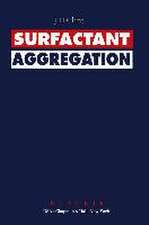Cosmetic Science and Technology: Theoretical Principles and Applications
Editat de Kazutami Sakamoto, Robert Y. Lochhead, Howard I. Maibach, Yuji Yamashitaen Limba Engleză Hardback – 27 mar 2017
As the cosmetics field quickly applies cutting-edge research to high value commercial products that have a large impact in our lives and on the world's economy, this book is an indispensable source of information that is ideal for experienced researchers and scientists, as well as non-scientists who want to learn more about this topic on an introductory level.
- Covers the science, preparation, function, and interaction of cosmetic products with skin
- Addresses safety and environmental concerns related to cosmetics and their use
- Provides a graphical summary with short introductory explanation for each topic
- Relates product type performance to its main components
- Describes manufacturing methods of oral care cosmetics and body cosmetics in a systematic manner
Preț: 1132.13 lei
Preț vechi: 1351.04 lei
-16% Nou
Puncte Express: 1698
Preț estimativ în valută:
216.63€ • 226.79$ • 179.25£
216.63€ • 226.79$ • 179.25£
Carte tipărită la comandă
Livrare economică 29 martie-12 aprilie
Preluare comenzi: 021 569.72.76
Specificații
ISBN-13: 9780128020050
ISBN-10: 0128020059
Pagini: 854
Ilustrații: 50 illustrations
Dimensiuni: 216 x 276 x 48 mm
Greutate: 2.24 kg
Editura: ELSEVIER SCIENCE
ISBN-10: 0128020059
Pagini: 854
Ilustrații: 50 illustrations
Dimensiuni: 216 x 276 x 48 mm
Greutate: 2.24 kg
Editura: ELSEVIER SCIENCE
Public țintă
Chemical engineers, chemists, physical chemists and cosmetic chemists in cosmetics research and developments, dermatologists, toxicologistsCuprins
Part I. General View of Cosmetic Science and Technology
1. General Aspects of Cosmetics in Relation to Science and Society: Social, Cultural, Science, and Marketing Aspects
2. Global Cosmetic R&D Trends Unveiled From Past IFSCC Award-Winning Papers
3. Basic Physical Sciences for the Formulation of Cosmetic Products
4. Scouting to Meet Unmet Needs
5. New Aspects of Cosmetics and Cosmetic Science
6. Psychology of Cosmetic Behavior
7. Dermatological Benefits of Cosmetics
8. Development of Cosmetics and Intellectual Property Rights
9. Regulations on Cosmetics
Part II. Fundamental Resources for Cosmetics
10. Introduction to Cosmetic Materials
11. Nomenclature of Ingredients
12. Water
13. The Use of Polymers in Cosmetic Products
14. Powders and Inorganic Materials
15. Surfactants
16. Emollients
17. Bioactive Ingredients: Benefits of Cosmetics Stimulated Through Biological Aspects
18. Fragrance
19. Amino Acids, Peptides, and Proteins
20. Botanical Ingredients
21. Functional Materials for Hair
22. Nanotechnology in Cosmetics
Part III. Physicochemical Aspects and Formulations
23. Wetting and Surface Characterization
24. Molecular Structure and Phase Behavior of Surfactants
25. Lamellar Gel Network
26. Polymer–Surfactant Interactions
27. Rheology of Cosmetic Formulations
28. Emulsion and Emulsification Technology
29. Microemulsions and Nano-emulsions for Cosmetic Applications
30. Effect of Molecular Assembly for Emulsion and Gel Formulations
31. Liposomes for Cosmetics
32. Skin Care Cosmetics
33. Body Care Cosmetics
34. Makeup Cosmetics
35. Ultraviolet Care Cosmetics
36. Hair Care Cosmetics
37. Sensory Measurement—Evaluation and Testing of Cosmetic Products
38. Structural Analysis of Formulations
39. Increasing Productivity by Reducing Carbon Footprint in Cosmetics Processing
Part IV. Physiological and Dermatological Aspects
40. Structure and Function of Skin From a Cosmetic Aspect
41. Skin Lipids
42. Structural Aspects of Stratum Corneum
43. Skin Aging
44. Melanogenesis
45. Sensitive Skin
46. Skin Penetration
47. Effects of Air Pollution on Skin: Dermatologic Options
48. Hair Physiology (Hair Growth, Alopecia, Scalp Treatment, etc.)
49. Clinical Evaluation and Instrumental Techniques in Dermatology
50. Safety Evaluation
51. Safety Assessment of Cosmetic Ingredients
1. General Aspects of Cosmetics in Relation to Science and Society: Social, Cultural, Science, and Marketing Aspects
2. Global Cosmetic R&D Trends Unveiled From Past IFSCC Award-Winning Papers
3. Basic Physical Sciences for the Formulation of Cosmetic Products
4. Scouting to Meet Unmet Needs
5. New Aspects of Cosmetics and Cosmetic Science
6. Psychology of Cosmetic Behavior
7. Dermatological Benefits of Cosmetics
8. Development of Cosmetics and Intellectual Property Rights
9. Regulations on Cosmetics
Part II. Fundamental Resources for Cosmetics
10. Introduction to Cosmetic Materials
11. Nomenclature of Ingredients
12. Water
13. The Use of Polymers in Cosmetic Products
14. Powders and Inorganic Materials
15. Surfactants
16. Emollients
17. Bioactive Ingredients: Benefits of Cosmetics Stimulated Through Biological Aspects
18. Fragrance
19. Amino Acids, Peptides, and Proteins
20. Botanical Ingredients
21. Functional Materials for Hair
22. Nanotechnology in Cosmetics
Part III. Physicochemical Aspects and Formulations
23. Wetting and Surface Characterization
24. Molecular Structure and Phase Behavior of Surfactants
25. Lamellar Gel Network
26. Polymer–Surfactant Interactions
27. Rheology of Cosmetic Formulations
28. Emulsion and Emulsification Technology
29. Microemulsions and Nano-emulsions for Cosmetic Applications
30. Effect of Molecular Assembly for Emulsion and Gel Formulations
31. Liposomes for Cosmetics
32. Skin Care Cosmetics
33. Body Care Cosmetics
34. Makeup Cosmetics
35. Ultraviolet Care Cosmetics
36. Hair Care Cosmetics
37. Sensory Measurement—Evaluation and Testing of Cosmetic Products
38. Structural Analysis of Formulations
39. Increasing Productivity by Reducing Carbon Footprint in Cosmetics Processing
Part IV. Physiological and Dermatological Aspects
40. Structure and Function of Skin From a Cosmetic Aspect
41. Skin Lipids
42. Structural Aspects of Stratum Corneum
43. Skin Aging
44. Melanogenesis
45. Sensitive Skin
46. Skin Penetration
47. Effects of Air Pollution on Skin: Dermatologic Options
48. Hair Physiology (Hair Growth, Alopecia, Scalp Treatment, etc.)
49. Clinical Evaluation and Instrumental Techniques in Dermatology
50. Safety Evaluation
51. Safety Assessment of Cosmetic Ingredients




















